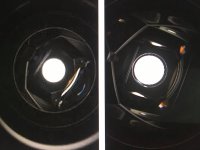It is not too late to cancel the order on the NL 8x42 if it has a problem with veiling glare. Historically Swarovski have problems with glare. Maybe the Zeiss SF 8x32 handles glare better. FOV isn't that much smaller and it is much lighter and smaller. The SV 8x32 and the SV 8.5x42 had more veiling glare than the rest of the alphas in my experience. Swarovski doesn't seem to be able to design a binocular without glare. It is frustrating because they are so good in many other ways. I figured with all the negative feedback about glare in their EL line they would have solved the problem in the NL.
Last edited:






